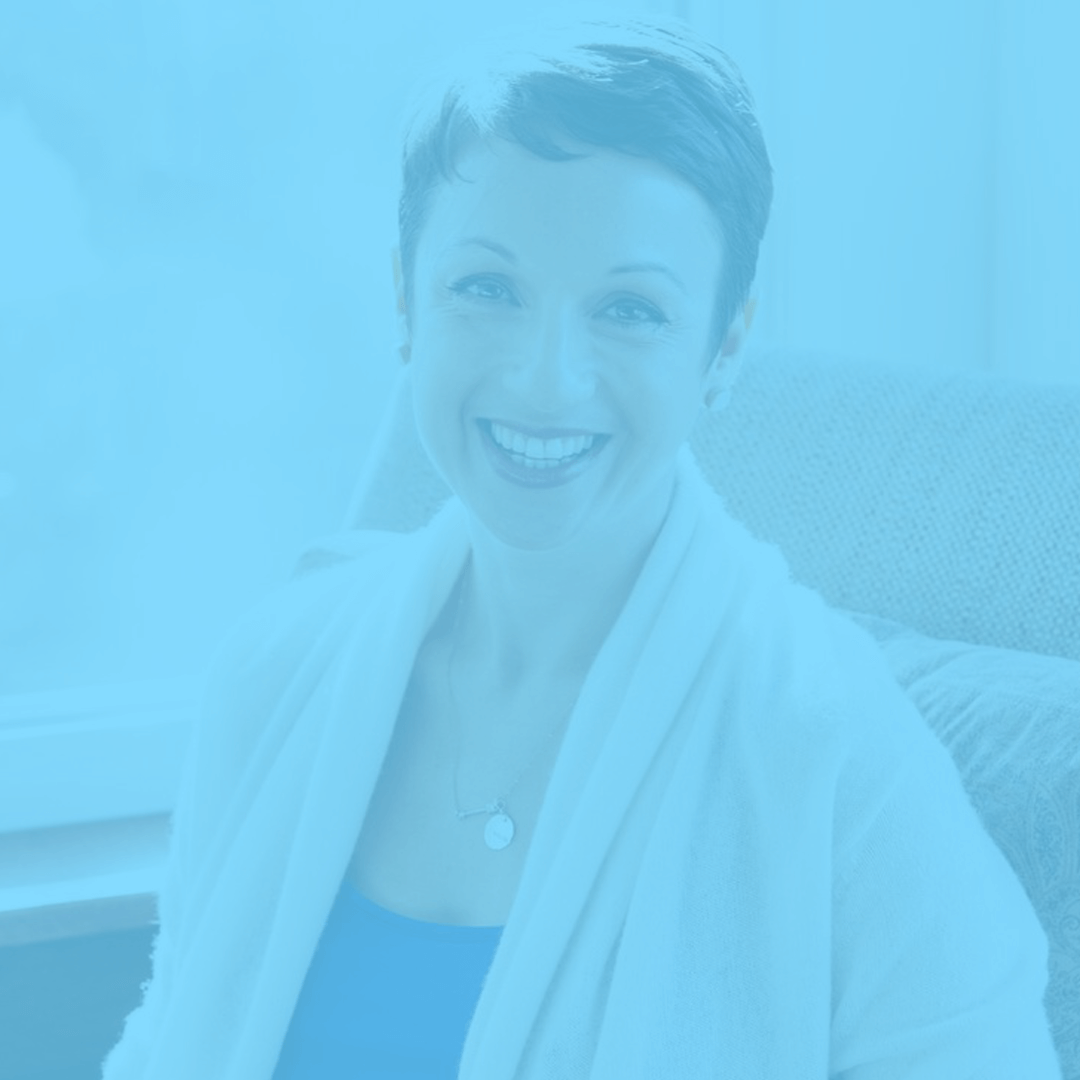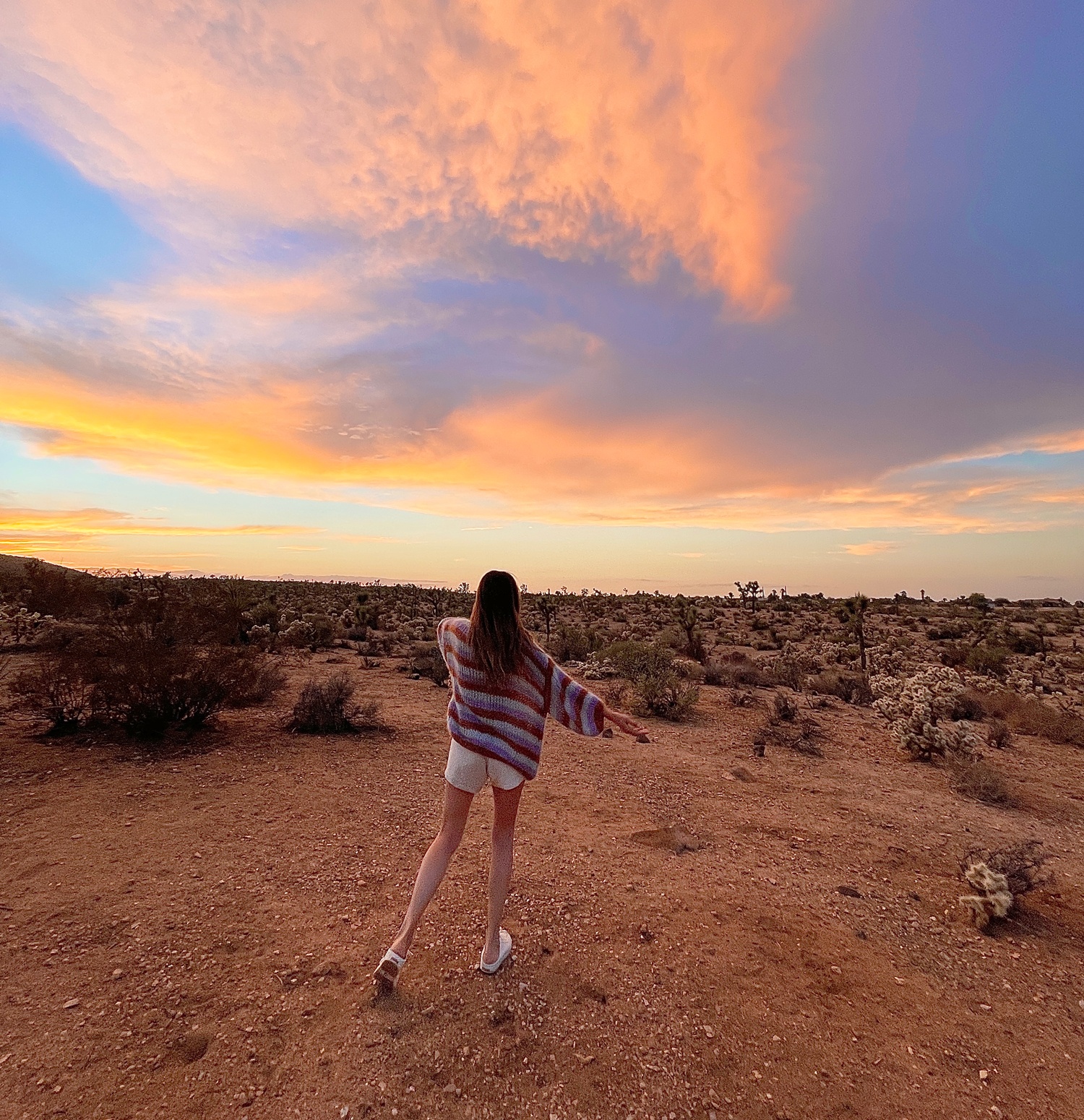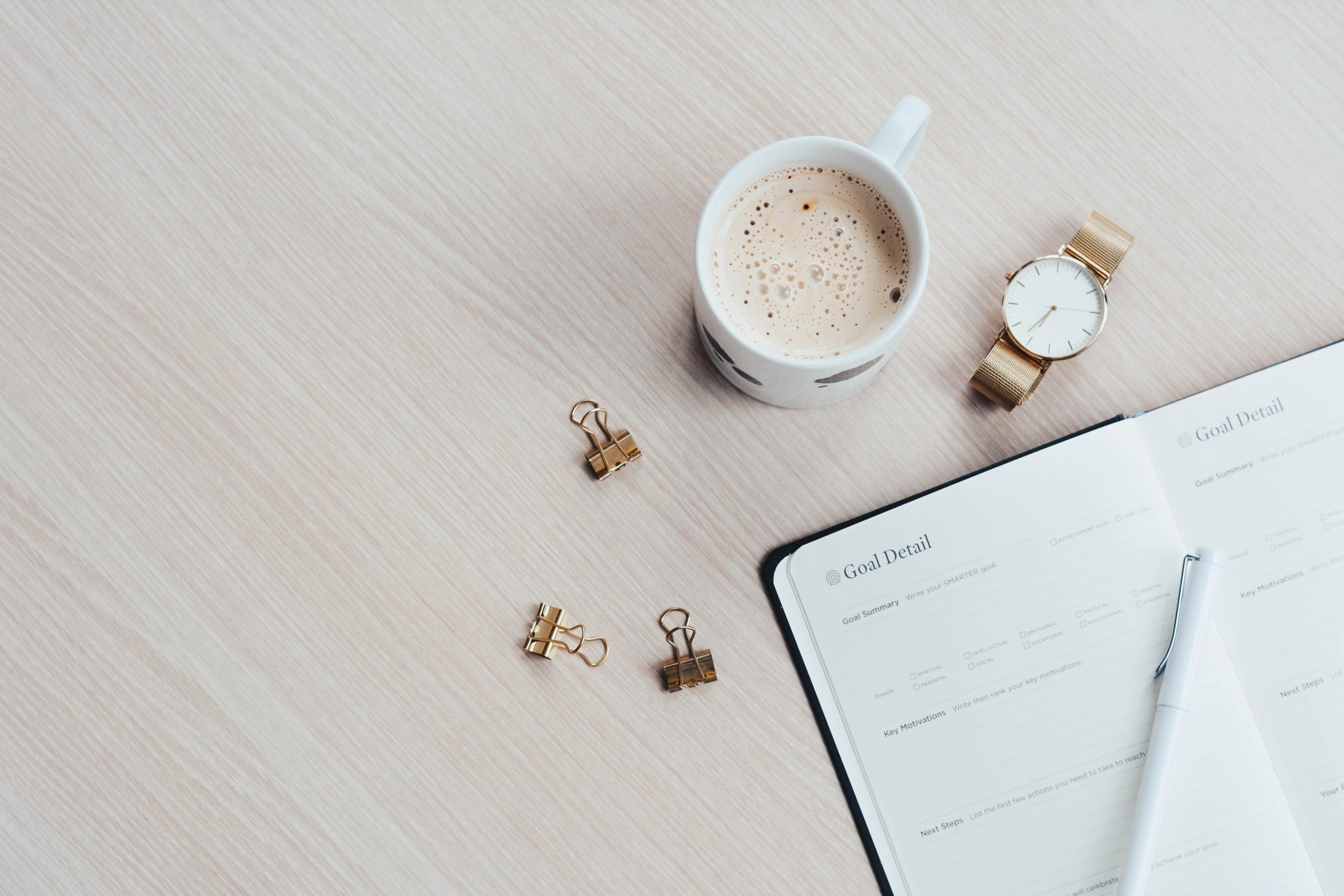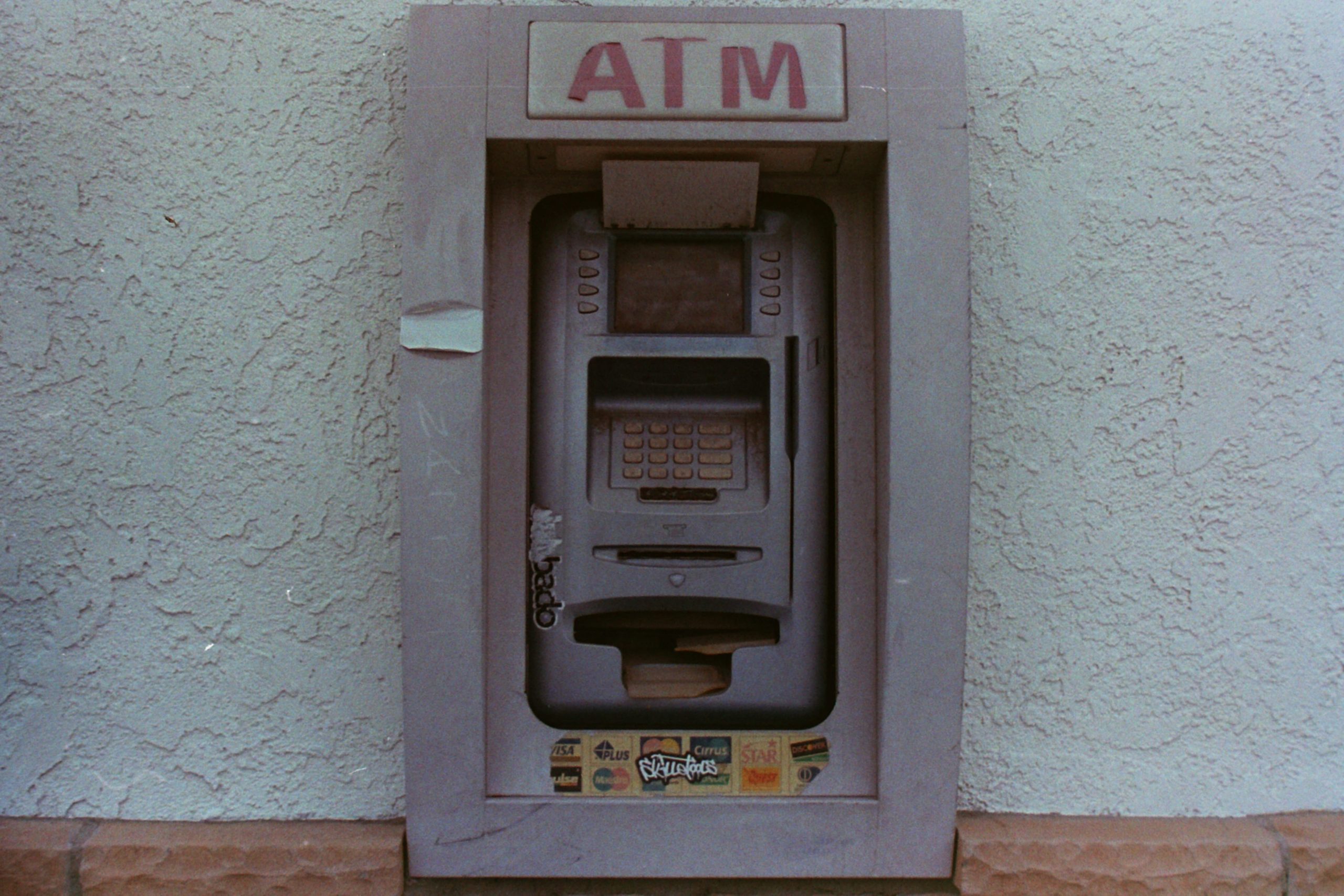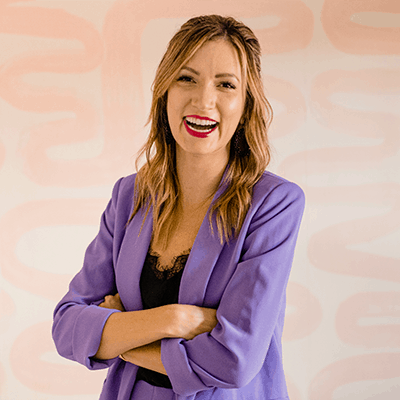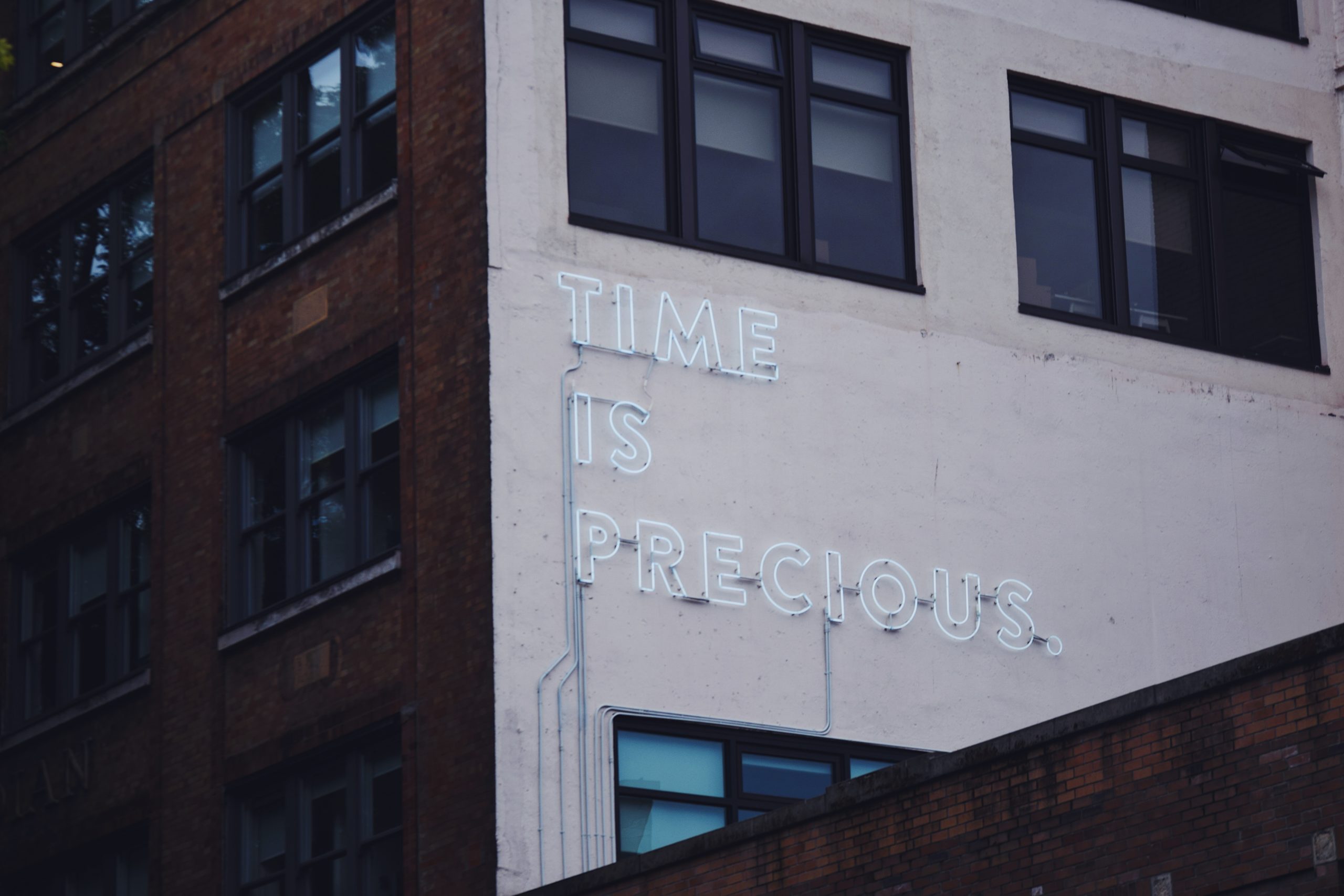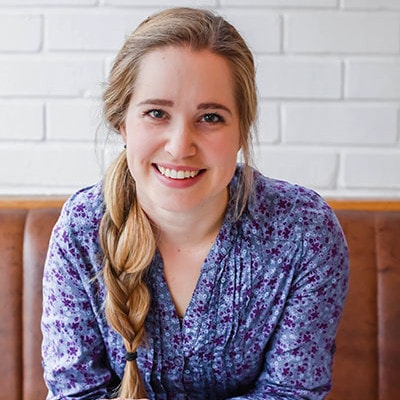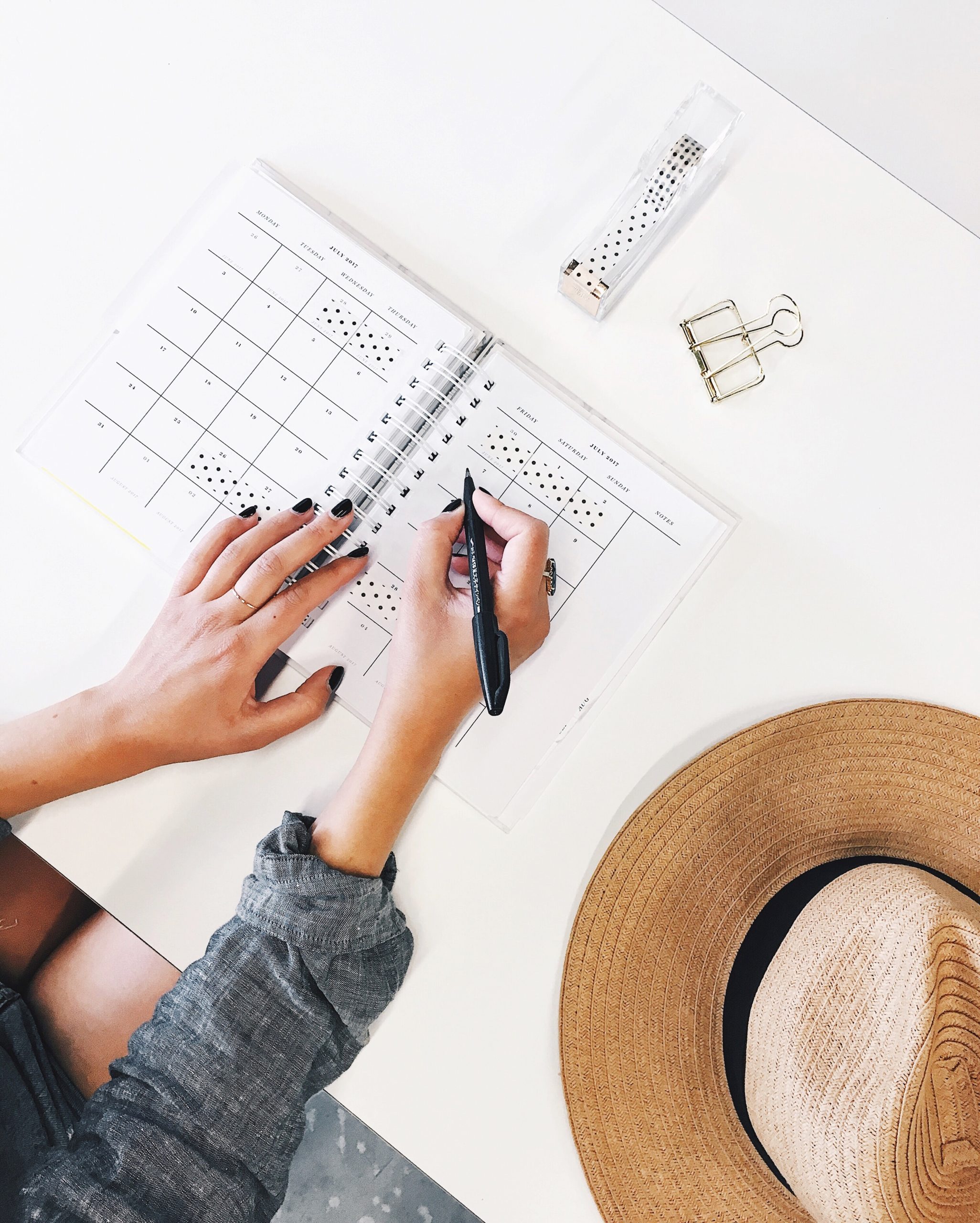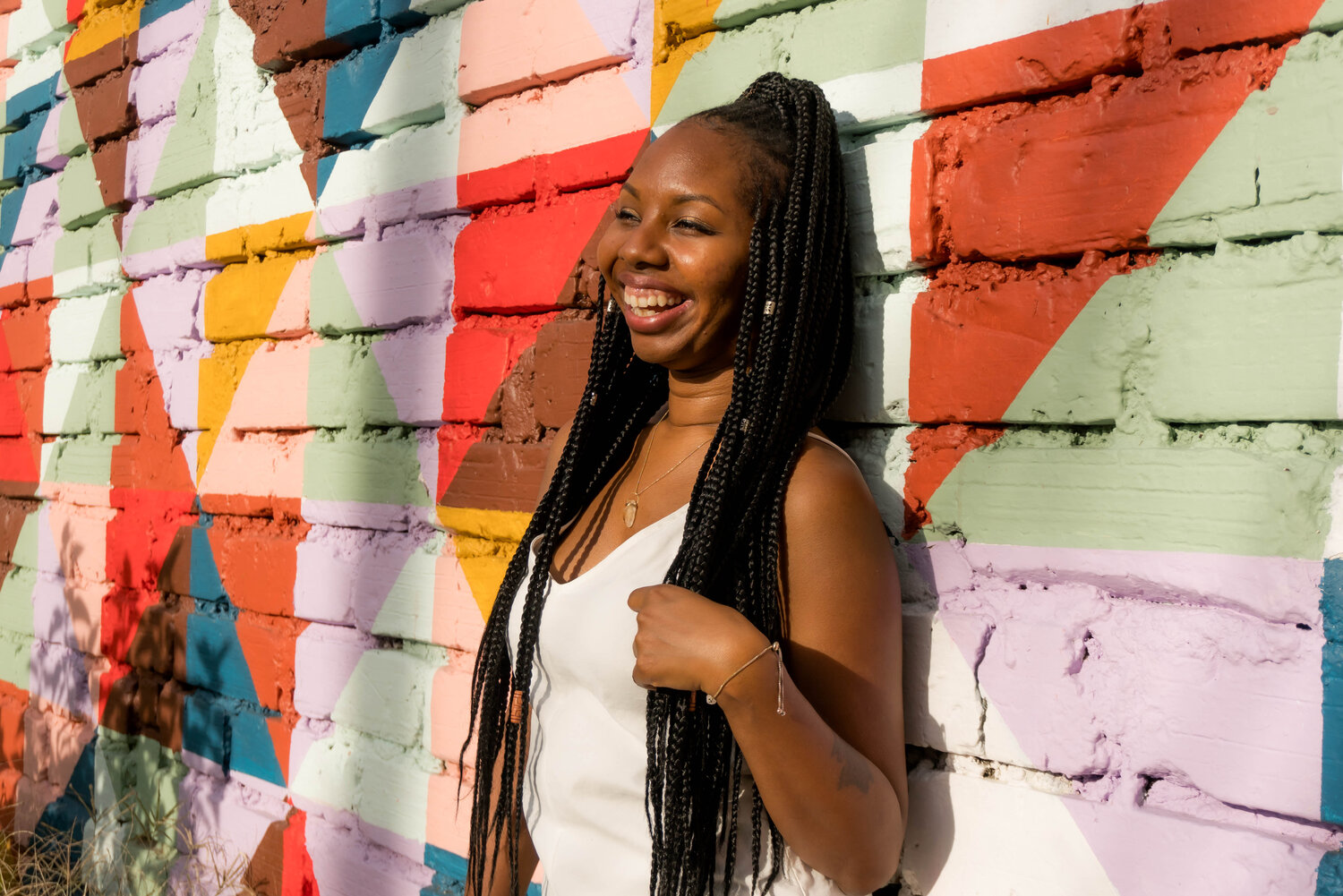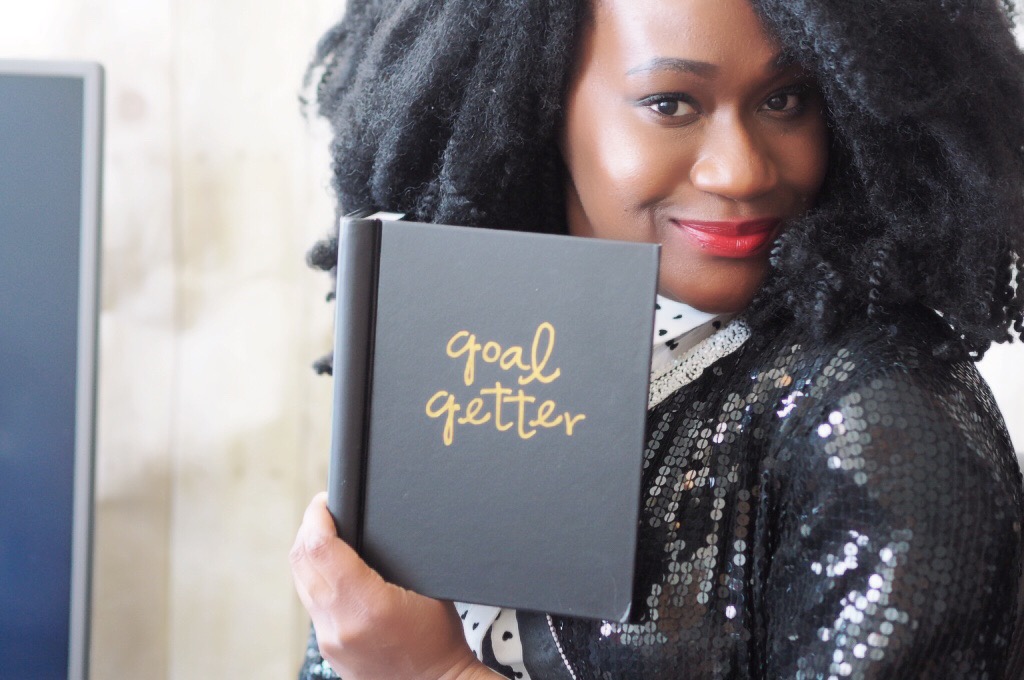What if you could be happier right now, without radically changing your life? This is exactly what today’s guest Nataly Kogan teaches.
Nataly is the founder and CEO of Happier, a global learning platform and app that has helped more than one million people live happier lives. She believes that happiness is not an optional, nice-to-have feeling. It’s a must-have – and it’s a skill we can all learn and improve.
I fully expected to be blown away by Nataly’s knowledge – and I was. I did not, however, expect this episode to touch me so deeply. This is one of my favorite episodes to date – and that’s saying something!
Nataly’s work has been featured in hundreds of media outlets including The New York Times, The Wall Street Journal, TedxBoston and more.
In this interview, Nataly shares some of the top tips from her latest book, Happier Now: How To Stop Chasing Perfection and Embrace Everyday Moments (Even the Difficult Ones). She brings such charisma and a realistic outlook to this conversation. You’ll also hear about how she came to the US as a refugee from the Soviet Union and built an incredibly successful business, and why she now focuses more on finding joy and purpose in her life instead of chasing achievements.
If you’re up for creating more happiness in your life (and really, who wouldn’t want that?), you’re going to loooove what Nataly has to share. 🙂
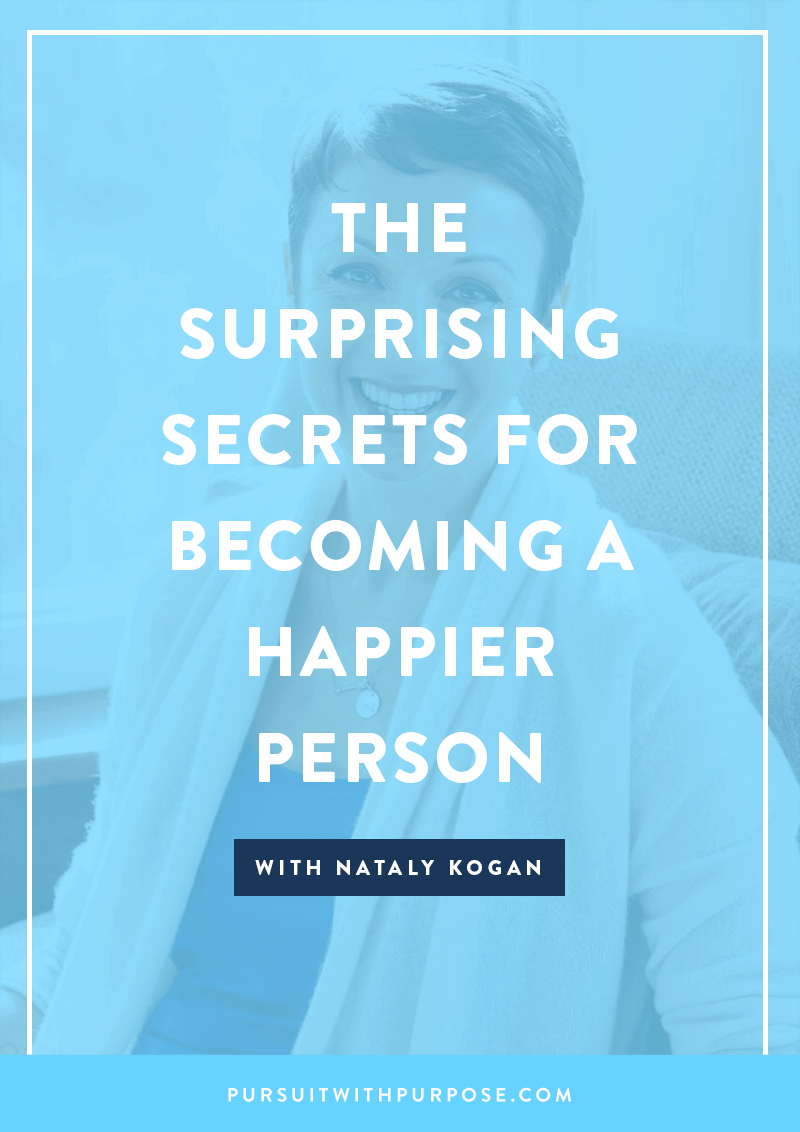
Check out the episode below:
In this episode, you’ll hear about things like…
- Why “chasing the big happy” for 25 years didn’t work for Nataly, and what she now does instead.
- How Nataly overcame a hustle mentality, and how this way of operating affects all of us.
- Why Nataly says that intuition is absolutely real – and how modern science supports ancient spiritual teachings. (She also explains how “gut feelings” work).
- The exact percentage of happiness that we have full control over – and the key shifts that allow you to increase your own happiness levels.
- How you can enhance your Emotional Immune System by practicing the 5 Happier Skills.
Some Questions I ask Nataly…
- What are the secrets at the heart of all your happiness research and teachings?
- How can feeling our negative emotions help us lead happier lives?
- How can we apply the concept of, “if you want to create change, start within yourself”?
Links from the interview:
- Nataly’s Website
- 5 Core Happier Skills
- Nataly’s Book, Happier Now: How To Stop Chasing Perfection and Embrace Everyday Moments (Even the Difficult Ones)
- Happier Mobile App
- Nataly on Instagram
- Nataly on Facebook
- Nataly on Twitter
- Nataly at TEDxBoston
- 40 Lessons in Happiness for My Younger Self
- “I Thought Grit Would Bring Me Success. It Almost Killed Me.”
What do you think?
I’d love to hear your thoughts on this episode. What is a small happiness practice you can commit to daily?
Here’s how to subscribe + review
Want to be the first to know when new episodes are released? Click here to subscribe in iTunes!
Also, podcast reviews are pretty darn important to iTunes and the more reviews we receive, the more likely we’ll be able to get this podcast and message in front of more people (something about iTunes algorithms?). I’d be extremely grateful if you left a review right here letting me know your favorite part of this episode.
#PursuitWithPurpose
Loving the podcast? I encourage you to use the hashtag #PursuitWithPurpose to show our PWP tribe how you live your purpose everyday. Plus, you’ll get to sift through the hashtag to find other business owners who care about community and connectedness over competition and comparison. And I’ll be reposting some of my favorite images and stories, too. 🙂
Thank you for listening!
Transcript
Read the Interview Transcription HereHey, Pursuit with Purpose fam. Now I am so excited to share today’s episode with Nataly Kogan, with you today. Nataly is the founder and CEO of Happier, which is a global learning platform and app that has helped more than one million people live happier lives. Her work has been featured in hundreds of media outlets, including The New York Times, Wall Street Journal TEDxBoston, South by Southwest, and the Dr. Oz Show. Today, she’s sharing some of her top tips from her latest book, “Happier Now”. And you all, this woman brings it. She’s got the knowledge, the stories and the attitude to really help you make a transformation in your life. This episode inspired me deeply. I love the charisma and the realistic outlook that Nataly brings to this conversation. And not to mention, she shares tons of practical tips and advice for anyone who wants to live their happiest life right now, including interesting science from her years of research on happiness. Now you’ll also hear about how Nataly came to the US as a refugee from the Soviet Union and ended up building an incredibly successful, but unfulfilling business, where she was focused more on chasing achievements than on finding joy and purpose in her life. Can you relate to that? Because I have totally been there too. As she’ll tell you, Nataly nearly lost her marriage. She felt like a terrible mother and she realized that despite her accolades, she still wasn’t happy. After years of happiness research since then, Nataly has transformed her life. She’s helped millions of others do the same too.
So I am just thrilled to introduce you to Nataly Kogan. This is one of my favorite episodes of this podcast so far. What would make me so freaking happy is that if you enjoy this episode, you get something out of it, take a little screenshot of you listening to it on your phone. And then post it on your Instagram feed or your Instagram stories and tag me @melyssagriffin. I just want to see how many people resonate with this message too and if this really helped you in some way in your life. So please let me know by posting this on social media and tagging me. But without further ado, let’s get into it.
Melyssa Griffin: Hey, Nataly. Welcome to the show.
Nataly Kogan: Thanks for having me. I’m excited.
Melyssa Griffin: I am so excited. So what I really want to do is just dive right in because I know that you had a really important journey when you were growing up, that lead you on the path that you’re on now. So could you tell us a little bit more about what that journey was like, what that entailed for you?
Nataly Kogan: Yeah. So the journey starts really far away. I grew up in the former Soviet Union which is now called Russia, in a city called Leningrad, which is now called St Petersburg. When I was 13 years old, my family and I escaped and we left everything behind. We tried to make our way to the United States as refugees. And so I think we had something like two suitcases per person, was the allowance. So we had six suitcases and a few hundred dollars, and that was it. We left like literally everything behind, including our citizenship. We had to write that off. We spent the following two and a half months in refugee settlements, first in Vienna, Austria, and then in Italy where American authorities and the INS sort of set up these settlements, because a lot of Russian Jews were coming that way. I was 13 ½. At 13 ½, I don’t think you want to move across the street, much to kind of leave everything behind. So it was kind of—I think I was in shock from the experience in some way, but also a bit in denial. I mean we were very excited to try and come to the United States because my parents always told me that I would have a better life here, but it was also really scary. We were very grateful, very lucky. We got permission to come to the United States after two and a half months. We settled as refugees. We settled outside of Detroit, in a little town called Ypsilanti, where we lived in the projects and we got welfare and food stamps just to help us get on our feet. I run a company called Happier. I just wrote a book called “Happier Now”. And so it’s often like a weird place to start, but that was such a transformative experience for me.
It kind of, as you say, set me on this path because I was so overwhelmed with feelings of sadness and anxiety and fear. I mean like if you think back to eighth grade, we’re not that nice to each other in eighth grade. And here I was. I didn’t speak English. I brought food stamps in. I had like donated ugly outfits, weird Russian cloth sneakers. I didn’t know how to open my locker. I didn’t know what a locker was. I was the butt of everyone’s jokes. I was miserable. It was awful. And so I decided that the only way—actually it wasn’t even a decision, the only times I felt good was when I achieved something, like when I got a good grade on a test or when I figured out how to say something in English and no one laughed at me. And so I was like okay, the way that I’m going to escape these horrible feelings of anxiety and fear is, I am going to be so successful and I’m going to achieve so many things, and I’m going to make everything in my life okay and better than okay. And then I’ll be happy. So I like adopted this “I’ll be happy when” idea in my mind, that if I achieve enough, then it’s almost like I’ll earn the right to feel good because I thought that—I also thought of happiness as this like state of being, that once you get there, you feel good all the time and you never feel sad and you never feel stressed. I was like okay, I’m going to get there. And so I call, in my TED Talk, I call this the chase of the big happy.
That’s what I did for, well I don’t know, 25 years. I mean I achieved so many “I’ll be happy whens”. I graduated at the top of my high school, my college. I got very impressive hard to get jobs. At 26, I became a venture capitalist in an industry of less than 5% women. By the time I was 30, I’ve written a book, I was a venture capital managing director, I was married to my college sweetheart, living in my dream New York City, had started a publishing company with my husband on the side out of our illegal sublet. I forgot what else, something else. I mean it was crazy. I was doing all these things. I did feel happy every time I achieved something, absolutely. I was also really proud, like I really came from a tough place, but that happiness never lasted. It never lasted. It was like this, I call them happiness bubbles, it just popped. I was left to chase the next happiness goal, the next achievement. The journey kind of brought me to a halt. It was about six years ago where I hit a wall. I was so exhausted. I’m sure I was burnt out, but I was also really sad and I couldn’t ignite that go, go, go anymore. To be honest, I was desperate to find a different way. I had a daughter at the time, like I didn’t—a young daughter who is now 13, which is crazy. And so that’s how my journey eventually brought me to Happier and studying happiness, and then going on this journey to learn what it actually means to be happier. It wasn’t because I knew that there was research that I could look at, it was because I was desperate to try a different way. I literally stumbled into research about happiness and I know we’ll talk about that, but that’s kind of how my crazy journey brought me to a place that I never in a million years thought I would be, which is I’m someone who spends her life sharing what I’ve learned and teaching other people how to live happier.
Melyssa Griffin: I have so many things to say about that. Thank you for sharing all that. I just feel like there’s so many parallels, and I’m sure a lot of our listeners feel this way too. I see myself so much in your story too, where I, at 27, had grown this multimillion dollar business and was constantly searching for achievement like you were saying, success and these external things that I thought once I get there then I’ll be happy. I won’t be so miserable like I am right now. I’ll get there and then I’ll just be happy all the time. That’s exactly what I thought too.
Nataly Kogan: Yeah. And so many people—not to interrupt you, but like—by the way, one of my favorite things you said that you “see myself in your story”. That’s my hope for everyone. That’s why I share my story, is because we all have so much in common. The facts are different, but that’s what I’ve learned, like we all share this. And so exactly, like “I’ll be happy when”. So I love that you’re sharing this.
Melyssa Griffin: Yeah, 100—it’s actually why I started this podcast because I had that moment and I was like oh my God, I’m never going to be happy if I just keep chasing, like you called it—I loved it—the happiness bubble where it just pops every time you reach an achievement and you’re just not happy. So I love that you talked about that. You mentioned something too, about how your early life and just you as a person, gave you this kind of grit mentality, this hustle and wanting to just work, work, work, achieve, achieve, achieve. Do you see that a lot in our culture now? What are your thoughts on this mentality of like hustle, achieve?
Nataly Kogan: Yeah. Love your question, perfect question. So I actually just wrote—this is a total plug, but it’s on the topic. The Washington Post published a piece that I wrote. The title was—I don’t have it exactly, but it was something like “I Thought Grit Would Help Me Succeed and It Almost Killed Me”. I encourage your listeners and you check it out. The point of it, and this is a big thing that I’ve learned on my journey, is that grit alone, this mentality of just like grin and bear it and just fight through and go, go, go, which is what I feel our culture worships, alone on its own, I actually think it’s very dangerous. For me, like I didn’t take the story all the way. It almost cost me everything. It did, because not just was I overwhelmed and burnt out and not really functional, I was an awful wife. I can tell you that. My husband and I, we met in college. So we’re like this old, married couple. We’ve been together for 21 years. Five years ago, I didn’t know if we would be together because my darkness and my hopelessness was spilling out. I was not being a very good mom. It’s one of the moments—one of the things that’s so hard for me and I still feel so guilty about that. I was not great at work, because the thing is great alone without all these other things like self-compassion, without things like gratitude and acceptance and kindness towards ourselves, great alone is very dangerous. That’s why I wrote the op-ed and I talk about this in the book as well, that it’s not possible. We as a culture idealize that.
I often say when was the last time you read a story in a national paper that was like, oh here’s a story about this person and they’re so kind to themselves, or here’s a story about this person and you know they take time for rest, or here’s a story about this person and they’re choosing to focus more on gratitude. We don’t see those stories. The stories we see are here is this entrepreneur who only sleeps every third day. They’ve started 19 companies. They have 7 children and they see them for 15 minutes. They have this new technology in which they can read their kids’ thoughts, so they don’t have to be with them. You worship that, right? I get it. Those are more dramatic stories and we’re a culture of—we’re a young country. We’re an immigrant culture and that’s like the Wild West and go and conquer. I get it, but I think it’s very dangerous. I cannot tell you how many people, since I’ve sort of come out with my story, and I do feel like this book is a coming out for me. Most people in my life, other than my family, they didn’t know how much I struggled. As a CEO of a company called Happier, I was—I mean—and so it is a coming out*, but I cannot tell you how many people have reached out. They’re everyone from CEOs to entrepreneurs to writers to bloggers and everybody in between, like oh my God, thank you for sharing that because I’m really struggling. I’m actually really successful, but all I do is grin and bear it and like grit, grit, grit.
Melyssa Griffin: Yeah. A) I love that you use the D word, dangerous, because I think that the hustle is not talked about in those terms enough. B) I was reading about just how that came out for you during those years of feeling miserable. It was things like—and correct me if I’m wrong, but yelling at your daughter…
Nataly Kogan: Yes.
Melyssa Griffin: Losing your patience or having more of a transactional relationship with your husband, rather than a love filled one. I think that’s so important for people to understand, that this like pit of misery isn’t you hit rock bottom, you have like an addiction or something like that. Of course, that’s its own thing too, but for a lot of people, the hustle leads to just tarnishing relationships with people, not…
Nataly Kogan: Absolutely.
Melyssa Griffin: …health. And it comes out in these small ways that we kind of blanket and we say well that’s normal, that’s okay.
Nataly Kogan: Absolutely. I love that you brought that up because there’s actually two sides of the same coin. My kind of going to this really dark place made everything and everyone in my life dark. I mean I almost lost my husband, our marriage, and he’s my best friend. Knowing that I was yelling at my daughter, or like even worse than yelling because every parent yells. If you’re a parent listening to this, you know you yell. But it was even worse for moments, like she loved to play this game, Connect Four, and we used to play this game and there were moments where I would literally zone out and she just sat there. She didn’t know what to do. It would take me like 20 minutes to get back in. So imagine being my daughter. You’re playing a game with your mama, who you love more than anything, and she just zones out. The scariest image, the guiltiest I feel in my mind is like when I see her big, huge hazel eyes when I would come back to, and she’s like—she doesn’t know what to do. She loves me, but she’s scared. So like my relationships at work, my ability to do my work sucked. I don’t know if I’m allowed to say suck on the podcast.
Melyssa Griffin: No, you can say whatever you want.
Nataly Kogan: Okay. But I became a horrible leader, a horrible manager, a horrible CEO. I was making awful decisions. It impacts everything. The flipside of that is also true, that when I started to practice the things I share in the book, when I started to open up to practices like self-compassion, when I focused more of my attention on practicing acceptance, I felt all this hope and I felt better. All the relationships in my life flourished. I mean I have this little video I filmed with my daughter, I interviewed her about the book because the book is dedicated to her. In the front, it says “For my Mia. I love you always and I love you more.”, because we always have a thing of who loves who more. I did this little interview, video interview with her and I said, “Mia, can you tell me one thing from the book or from how you’ve seen me change that’s impacted you?” She said, “Compassion.” She said, “As I’ve seen you do it, I’ve learned to not be so angry at myself when I screw up.” What greater gift can you have? I don’t know. My husband and I saved our marriage, but more than that, his career has taken off. He’ll tell you that—he’ll be the first person to tell you that it’s because he was fueled with everything I was practicing. I feel that the work I’m through Happier, through Happier workshops or my book, like it’s so much better. And so how we feel—and there’s so much research on this—is contagious. And so when we hit rock bottom, we are not alone. We are pulling everyone around us into that bottom. On the flipside, when we do these practices, when we practice our happier skills, because you know, you’ve read the book, I look at happiness as a skill, not a state of being, but a skill. We also impact everyone around us. I’ll tell you now that whenever my grit gets the better of me, because there are those weeks where I’m like back in that mindset, the biggest reminder to me to come back and like do the practices and like live in this way, is my family because I have very vivid realization of just how much they are thriving because I am, because I’m also kind to myself. So it’s a great point. It is, as you say, not something we talk about because it’s always like this lone entrepreneur hustling. There are people around them, that if they’re suffering, those people are suffering too.
Melyssa Griffin: Yeah, I couldn’t agree more. I like, just your overall message of, if there’s anything that you want to achieve or have in your life, whether it’s relationship or business, come back to that place of inner work and inner compassion first. It’s probably not that you need another tactical strategy on how to do something for your business. It’s really something that needs to happen inside and that’s been what’s shifting for me too.
Nataly Kogan: I love that you say it. It’s such a beautiful way to say that because it’s absolutely true. I write about this in the book. I cannot tell you how much I feel my ability as an entrepreneur, but also like just the quality of my work and the quality of my relationships, have dramatically been improved, not because I have different communication strategies or because I found some cool thing I didn’t know about, marketing tactic. It’s because I show up as my full self, my true self now and I did not used to do that for two reasons. One, I actually was not connected to my true self before. By the way, I should tell you, if anyone out there is going “oh my God, true self”, whatever, that was me. Three years ago, if someone said the word true self to me, higher self, I’d be like okay, fingers in my ears, blah, blah, blah, because I was so one dimensional. I was so cerebral. I was so in this closed way, like rejected anything that didn’t sit right. Part of my journey back—and not just back to a better place, I write about in the book that I was brought to this woman who became my spiritual teacher. Thank God she didn’t say spiritual teacher for awhile, because if she told me that’s who she was, I would have run out of there because I’m like, “Spiritual teacher? What the heck? I’m a daughter of a scientist. I’m a math whiz. What? That’s for woo*.” Because for me, I was so dumb, I was so naive that I would treat spirituality or stuff like that as like oh that’s a crutch for people who can’t make it in real life. I was so closed off and so obnoxious that way, to be honest with you, because I didn’t understand it. I actually had no idea what I was talking about. I didn’t know what any of that was. And so having done this work and have really opened up, some of it has been intellectual with science and research. I’ve done all this research. A lot of it has been spiritual to be honest with you. I don’t have a religious background, like ever. We’re Jewish, but in Russia, religion was illegal, so I’ve never practiced religion. So for me to open up to that…
I’m saying all this because the reason that everything in my life is just of higher quality now is because I show up as my whole self. I never used to do that. And so it’s affected everything. I think I love that you said it that way because when we are grit and bearing it, when we’re just trying to survive, when it’s all like struggle grit, it’s impossible to be our whole selves. It’s just not possible that way. And so we’re actually not able to bring our best selves. So even though—I can tell you, I used to work way more hours. I mean I work hard. You’re an entrepreneur, it’s kind of like non-stop right, but it’s a different kind of work. I don’t feel like I’m forcing it. I used to often feel, I don’t know if you know what I’m saying or if your listeners do, I think we can all relate, like I would force a lot of it. I’d have to like okay, I got to get this out. All right, I’m just going to crank out this blog post…
Melyssa Griffin: Because you know it’s out of alignment with what you’re—if you’re truly being intentional, you wouldn’t force yourself to do something like that.
Nataly Kogan: Exactly. And so now I actually have a rule with myself and I—this is actually something I stick to, I can say close to a 100% that when I’m sitting down to do something, maybe it’s a blog post or it’s a podcast—you and I were talking before we started that you said, “Oh, you’re so joyful and full of energy. You’re an author on a book tour right now, you must be exhausted.” I said, “I wouldn’t do it unless I could be all in. I would cancel.” I would suck for doing that but I wouldn’t do that. And so I have a rule with myself, that before I do anything, a talk, a workshop, a blog post, I have to feel that it’s exactly like me. When I don’t feel that way, I try to do something about it, because—you and I were talking before, people know that. Whether we know it consciously or not, the energy that comes through with something that isn’t from our true selves, everybody can feel it. They may not be able to verbalize it, but you can feel it. To all the listeners, the example I want you to think about, like you ever see someone, a performer, or you read something and it just touches you so deeply and then sometimes you don’t. Sometimes you read something, it’s kind of like… To me, it’s either the person comes from their full selves like unabashed or they aren’t. I know we all know that on a receiving side, so it’s the practice of creating from that true self when we are the creators and the entrepreneurs or the writers.
Melyssa Griffin: Yes. I love that you brought up true self, whole self. Even what you were saying about how you just didn’t understand it before, and so you just chucked out the window. I think a lot of us, especially in the entrepreneur world, go to that logical part of our brain and anything else on the other side is like there’s no facts to support it, I’m not doing it. I think it’s so important to really lean into that other intuitive side and find those more spiritual truths for ourselves too and be able to show up as our whole selves.
Nataly Kogan: I’ll connect to one of the ways that—one of the benefits that I’ve seen, so I do all this research. So I read a lot of neuroscience research on psychology. It’s amazing how there’s actually modern research that supports a lot of these ancient truths. I’m a Yogi. I do a lot of yoga and not just—it’s not even how much I practice, but I try to live life kind of according to yoga philosophy. It’s amazing how many modern research studies basically are proving in our logical way, what the yogis have been talking about for a very long time. It doesn’t have to be yoga. It’s Buddhism. It’s ancient wisdom. The spiritual wisdom there is actually such thing as intuition. It’s a thing. It’s acknowledge by modern science. So just one tidbit I’ll share with you and your listeners, that when something happens or you encounter something and then you have a thought about it, the thought is a few seconds after you sensed it. So that gut feeling, it’s actually our brain. It already knows. And then our thinking part is explaining it to us. And so one of the examples I use is, like you ever meet someone and you’re just kind of uncomfortable. Well for whatever reason, it’s just not. And then your brain starts like oh this person’s posture is weird or oh this person is speaking weird. That’s just your thinking brain explaining to you what your true self, your brain already knows. The energy didn’t jive. And so it’s actually very true. I’ve done all this research on posture. It’s why the way that we greet someone basically affects everything. And so for example, if you have your arms crossed when you greet someone, it’s very hard to have a good conversation with that person even if logically you really want to, because the energies have already rejected each other. So the best way to greet someone is actually to have your hands down by your body and open. That’s how we communicate openness.
So there’s all this amazing modern research, is what I’m saying, that actually shows that all these spiritual truths are actually true. And so if you need that logic, it’s actually there, like the modern science is there to show you. What I have found for me, like as much as I rejected it initially, once I opened up to it and once I started to be aware of it, I can’t live any other way. Once you open that dimension, you can’t shut it. You can’t be like okay, now I’m just going to go away. It’s a gift. It’s a gift to have it. To everyone listening, if you are someone like I was, who is like this is just woo* talk right now, first of all, that’s okay. One of the happier skills I teach is acceptance, so just accept. It’s absolutely okay. You just haven’t been introduced to it, but what I encourage you to do, is maybe just this one, start with this one little thing of like connect to that gut feeling that you get, and just pause for a minute when you have it. Just pay a little attention. I find that we learn so much more just from awareness.
Melyssa Griffin: I love that. I’ve actually been having a similar conversation with my partner because I’ve become very spiritual over the past couple years, kind of similar to you, just found it as this ingredient to my path to more happiness and fulfillment. I really want to share that with him. For him, he’s very facts oriented. He’s like, “well, send me some research” or “send me some facts on why this is true and then we can talk more about it”. What I’ve tried to express to him is there’s research out there, but it’s something that you just need to feel. You just have to let yourself trust it for a little while and then if it doesn’t work, you can check it out the window, but let yourself just trust it for now. And then see if you feel different, because it’s not always going to show up as this factual thing you can write down in research study, it might just be that you feel 10 times better than you did before; more connected, more happy, more in alignment.
Nataly Kogan: Yeah, totally. I used to be that person. I used to be that person to whom like—the conversation we just had in last 10 minutes, if I had heard it, I’d be off this podcast. I’d be like so much BS. It’s simply because I was closed off to it. One of my favorite ways—I think it’s Ram Dass. I don’t know if you ever read any Ram Dass. He’s amazing. So Ram Dass actually is a very famous spiritual teacher. He’s still alive. He’s pretty old in Hawaii. He started out as Richard Alpert. He was a professor at Harvard, professor of psychology, all cerebral, all fact. His parents are actually super famous. They’re founders of Albert Einstein University, like super cerebral, intellectual family. He had this experience, it was in the 70s, where he writes about “all of a sudden, I realized I’m teaching psychology and I have no idea how to feel good. I just have no idea. I have all these studies.” So of course, it was in the 70s. So first, he was doing LSD because that’s what you did in the 70s. What he learned from LSD is that he could get to the state of being where his logical mind was not in charge. That led him on a path to go to India and study with a guru. He came back as Ram Dass and he’s been this leading spiritual teacher. He has a wonderful way to write—I love his writing because he’s so real and he’s not sitting on some pedestal like oh I’m all spiritual. I was jealous the other day because that happens, you can be spiritual and be jealous. He has a wonderful way to write, like just about what you’re talking, he’s like think of it as different channels on the TV. You have the brain, the cerebral channel. That’s a channel. It’s real. It’s fantastic, but then you also have the more spiritual channel. It’s just a different channel. So it’s not better, one of them better than the other, but it’s more. And so we all probably want to have a TV with two channels is better than one. He’s like if you could just connect to that part of you, you don’t have to give up the intellectual. I think that’s the other thing, is I used to kind of think it’s like, again, so naively, it’s either or, but actually together. I’m still a total science geek. If you read my book, you’ll see there is something, I don’t know—I think my publisher quoted. I quote something like 50 different studies, but I also talk about spiritual experiences. I think that’s how I look at it, is just—that’s I guess the whole idea of our whole self. It’s not one dimensional. All of ourselves are creative and spiritual and loving and have sadness and intellectual. It’s just—that’s how I guess in a way like, this is super philosophical, kind of see life journey is that way, is just how many parts of our whole self can we connect to.
Melyssa Griffin: I love that. Yeah, I really liked that. I like that you said that you don’t have to give up the intellectual side, that’s not what we’re trying to do here. We’re trying to just affect* the full spectrum of our being and our life. I love that. So I want to ask you a little bit about your happiness research. I mean you’ve affected millions of people. You’ve done tons of research, written a book about it, have an app. Is there something that’s like at the heart of your research, that this pattern that keeps coming up, something that keeps showing up as this is what makes people happy?
Nataly Kogan: Yeah. There’s two things, and these kind of have formed—well, three things I’ll say, that have really formed my philosophy. This is what the whole book is about. Well, the first part is my story, and the second is the how to. So the first is—and this is where my idea came from, that happiness isn’t just a feeling or a state, it’s not a passive state. It’s an ongoing action. It’s a skill you can improve through practice. So only about 50% of our happiness is set. It’s genetically determined. The other 50% is up to us. I think that’s so empowering. So we all have different set happiness levels. My husband is actually naturally much happier than I am. He’s one of those people, he wakes up in the morning just generally content. I’m a Russian Jewish immigrant, like suffering is in my DNA. So naturally, my happiness level is lower. Research consistently shows that it’s something we can affect. And so the first kernel*, and that’s where my whole mission is to get people to think of happiness as something to do, not something that you feel. It’s not set. It’s not like this is how I am, because I often hear that from people. This is great, but like I’m just an unhappy person. There’s no such thing. We all have our set happiness level, but all of us have the ability to improve it. And so that’s one of the foundational pieces. That’s so empowering to me. I don’t know, like that’s very hopeful.
The second is that I used to think of happiness as this state of bliss that you and I talked at the beginning, like once I get there, I’ll feel good all the time. That’s just a bunch of BS, because we as human beings, are meant to experience all the different emotions. We wouldn’t have them otherwise. One of the things that I talk so much about, and actually maybe one of the top reasons I wrote my book is, to really redefine what it means to live happier and that it’s not about being positive all the time. It’s not about turn that frown upside down, all that we hear in the culture. It’s actually about two things. It’s about finding more joy in everyday moments, like in the simple things with gratitude. And then it’s also about learning how to be okay with not being okay. To me, a big part of happiness is to learn, again it’s a skill, how to embrace the difficult moments without fear, without trying to push away those feelings. I hear from so many people, they’re like, “Well when I feel stressed or when I feel sad, it’s feel like I’m failing and being happy. I’m failing at life.” I used to feel that too, but it’s quite the opposite actually. Research shows that when you acknowledge your difficult emotion—and you notice I don’t use the word negative, because that’s the other trap we get into, like this is positive emotion, this is negative emotion. When you acknowledge your difficult emotion, and by that I mean you say it to yourself or to someone or you write it out, you actually get through it easier and you feel it for a shorter amount of time. So think about that. Think about how many times all of us—and I was such a master doing this—we try to escape it. We distract ourselves or we self-medicate with whatever it is. For me, it was over achievement. For some people, it was drugs or alcohol or shopping or whatever it is. The emotion doesn’t go away just because you go away, instead, the biggest thing I learned from research is learning how to embrace our difficult feelings actually helps us to get through them faster and easier. And so I am redefining what it means to be happier based on that. That is not just smiling and being happy. You don’t have to be positive. The strength, the resilience to get through difficult emotions is also part of it.
The third kernel* from the research is that I think we make happiness too hard. What I mean by that is there are these tiny scientifically proven little things that you can do that take seconds, that have been scientifically shown to dramatically improve, not just how you feel, but also your health. And so that’s what I dedicate the second part of my book to. I have something like 37 little practices and most of them take less than a minute. They’re all based on research and it’s all about practicing these five happier skills, but gratitude is one of them. I just had to do a talk earlier today and I taught the audience this tiny little practice. I’ll share with you. It’s one of my favorites. I call it a gratitude antidote. So when you’re stressed out or anxious about something or someone is rude to you because rudeness really affects us negatively, can you pause and can you find something, however small, to be grateful for and actually express it in some way? So if you can write it down—if you’re in a car, please don’t write it down, say it. So thinking it is not quite enough for our brain is amazing at ignoring thought. So say it to someone else, write it down, take a picture of it. If you practice this—again, what I just described is less than five seconds. You get stressed out, you pause and use your gratitude antidote. You actually think of something you appreciate. There’s something, amazing chemical that’s happening in your brain. So we all have this negativity bias. So because our brain is trying to protect us from danger and danger usually has negative stimuli, your brain is constantly scanning your environment for something negative, like what’s wrong with this, what’s going to happen. I know we’ve all been there. And so when something difficult happens or stressful, your brain gets very excited actually. It’s like oh, I found something negative, let me focus on that. It’s very easy for that thing to be big. You ever have a day where like a few things go wrong and they’re kind of small, but your whole day is shot?
Melyssa Griffin: You’re just in a crappy mood.
Nataly Kogan: Yes. Well that’s because we are more sensitive to negative stimuli when we’re already feeling down. And so you really risk going down the spiral. When you do this gratitude antidote exercise, you literally chemically release serotonin and dopamine in your brain, which makes it feel really good and your brain switches. It literally makes the switch from let’s find more negative things to I feel good, let’s look for good things. And so again, here is a practice supported by research, that takes less than a minute, that can fundamentally help you feel better and get you out of a downward spiral. And so that’s my third kernel* from the research, is what are these tiny things we can all do. Now it’s practice, so you actually have to do them, but they’re not difficult. They don’t require you to like go meditate in Nepal for a year. You don’t have to cleanse your soul and organize your desk. It’s not any of that. It’s just these little practices, but it’s incredible. It’s also incredible. It’s also incredible, the cumulative effect if you do several of them every day. So I teach this little five minute happier workout. If your listeners, if you go to happier.com, it’s right on the home page, where I’ve put these five happier practice skills into a little five minute workout. I do it every morning. I teach audiences to do it every morning. It’s amazing scientifically, what happens to your brain if you do it. Those are my three kernels.
Melyssa Griffin: I’m going to do that. That sounds amazing. Those aren’t just kernels*, those are big, amazing things. I have so many things I want to talk about with that. One thing that I just love and appreciate and I’m so grateful to you for saying, is that happiness is not about getting rid of all of your difficult parts. It’s about accepting and feeling them, and then moving on. I thought of this analogy in my mind of like two people who maybe are in a conflict. If you see that person every day at work or something and you just ignore them, you don’t like them, you give them the side eye. For weeks, you guys are just in this state of passive aggression and just not liking each other, but not confronting it versus if you just had a conversation with them right then and there and work through it, and actually probably became closer because of it. I saw that in what you were talking about with ourselves, where it’s like we could just keep hiding from it, covering it with other things that we think are going to make us happy, but until we really feel those emotions and confront them, we can’t feel happier with them.
Nataly Kogan: I never thought about it that way. It’s actually fantastic. I may have to borrow that for one of my talks. I love that analogy because it’s the same thing. I think, look, the first thing I want to say is that difficult emotions are no fun. I’m not asking anyone to feel happy because they feel sad. It’s not fun. It’s no fun. I understand because I had it for so long, why we all have fear of negative emotions, I had it. I know one thing, I was always afraid to allow myself to feel sad because I thought if I feel sad, I’m going to feel sad forever. I’m going to be stuck in it forever and then I’ll never feel happy. Research actually shows that all of us overestimate how long we’re going to feel bad and how severely. So we all over estimate. My point is I get the fear. I had it. It’s normal because it’s not fun. The thing that I want to say and this is—it seems obvious when you gave this example, but it’s amazing how many of us miss it. I feel like we live in this culture—I said this before, it’s like turn negative into the positive, turn that frown upside down. Even as a mom, I notice when my daughter is grumpy, what’s the first thing I say? Hey, cheer up. When your friend is sad, what’s the first thing we say? Hey, feel better. And so we live in this culture that’s constantly telling us that smiling is good, feeling sad is not. And so my point is I understand why we all think that this is wrong, but as you said, just because you try to avoid it, doesn’t mean it goes anywhere. It actually doesn’t.
A huge reason—this was like one of the most painful things to share in the book, a huge reason that I got to this very dark place in my life is, because for 20 plus years, I tried to cover and run away from these negative feelings through achievements. Well, guess what? They all collected in there and then they just started to spill out. I couldn’t control it anymore and it was awful. And so one way that I want to share, that I find it really helpful, so we all know we have our physical immune system. When there’s a germ and we get a germ, the first thing our physical immune system does, is it looks at the germ and it’s like oh what is this. Not a good thing. Let’s go figure out how to help the body get rid of it. It’s kind of literally what happens. So we all have an emotional immune system as well, and it works the same way. When we have a difficult emotion, your emotional immune system gets your resilience going and it helps you get through it. The first thing we have to allow it to do is we actually have to acknowledge the difficult emotion is there. Imagine what would happen if you got a germ and your immune system was like forget it, don’t want to deal with this. I mean we would literally die. We die from all these diseases. And so think of the same way of the emotional immune system, that it will help you. We all have it. That’s where the research comes from, that we all over estimate how long we’re going to feel bad. We actually have this ally. It’ll help us, but it can’t help us unless, first, we let it see that this is how we feel.
Melyssa Griffin: I like that concept, emotional immune system and just not ignoring your emotions, difficult or positive. I really like that. Is there anything that we can do to enhance our emotional immune system? Kind of like how you can drink green juice or something to enhance your regular immune system?
Nataly Kogan: Yeah, absolutely. Also the short answer is all the practices that I talk about, building up you happier skills, that’s what we do to enhance it, because that’s why I look at embracing your difficult feelings as part of living happier. And so as you practice gratitude and acceptance and self-compassion and kindness and connecting to your sense of meaning, which is my five happier skills, you don’t just feel good when things are good. You’re actually strengthening your ability to get through difficult moments because you’re strengthening your emotional immune system and your resilience.
Melyssa Griffin: I love that. So everyone listening, we need to get Nataly’s book. I want to try all of the practices that you have in your book too.
Nataly Kogan: I actually meant* on purpose, it’s not a workbook. It’s a book, you read it. I’m pretty sure that’s the exact number, 37 little practices. As people are starting to read it, I love, like everyone’s getting—so many people are getting in touch and they’re like oh my God, I love the little practices because I just stopped and did it. It doesn’t take a lot of time, but you feel the impact right away. And then I give different ideas for how to do them. One of the things I ask people to do in the book is, as you try the different practices, can you pick a few that you do every single day? Some resonate more than others till they get it. Because for me, one of the things that—one of my tool kits as I kind of went on this journey to live in a different way, is I created a set of these little daily anchors. For me, that’s what I teach on the happier work out. There are five little practices and I do them every day. I write them down actually before my to-do list. What I encourage folks to do as they read the book is, as you try these different practices, can you create a few—you don’t need five, it could be three, it could be two. Can you pick a few that you can commit to being your daily anchors? Because there is such power to each one, but there’s even more power when you do them together and you do them consistently. That’s why I think of living happier as a skill because you can go to the gym once a year, you’re not going to be in great shape. If you eat* healthy once a year, you’re not going to be healthy. And so the same way to truly improve our emotional wellbeing, we have to practice. Now the good news is, the practices feel good right away. They’re not complicated. They don’t require you to do a head stand in yoga class. They’re like really easy, but the new—I would say the thing is, you have to practice them. And so I encourage people, that’s the second half of the book, as you try these little practices, can you pick a few that you make non-negotiable parts of your day? Especially when you’re going through something rough, having those daily anchors, it literally helps you anchor in the storm.
Melyssa Griffin: I love that because I think that’s such an important point, that it’s cumulative. You have to be consistent, much like if you’re trying to lose weight or be healthier. It’s not something you can do one time. It’s something that you have to continue to do on a daily basis. I think that’s such an important point to bring up because I feel like in more of the emotional, psychological world, we think well I’ll do it once or twice and then if it doesn’t work, then I’m stopping. It’s like how many times have you exercised and seen results after one or two exercises?
Nataly Kogan: Exactly. Exactly. But you feel good after you exercise. And so what I love about all these practices is, they all make you feel good right away. They create a true sense of wellbeing if you do them over time. I actually, like to me—I’ve used this word before even talking to you, like this is very hopeful to me, because to me, this means that it’s possible for anyone, any time to feel happier. That’s why the company is called Happier and that’s why the book is called “Happier Now”, not happy or happiness, because I see living happier as a process and progress. You can start wherever you are. Maybe you’ve done gratitude your whole life, okay, now try more of the self-compassion or the kindness practices. Maybe you’re someone who is grumpy all the time. That’s okay too. You can start where you are. Talking about it as a practice also helps me—I probably have a strong inner perfectionist. That’s why the subtitle of the book, I love, it’s “How to Stop Chasing Perfection and Embrace Everyday Moments (Even the Difficult Ones)”, because I was such a perfectionist. I feel like when we approach happiness as a practice, then if you don’t do something one day, that’s okay. You’re practicing, so just get back to it tomorrow versus it’s like I got to do this and then I’ll feel happy. So if I didn’t do this, I can’t have it. To me, it’s like—someone asked me on an interview, what is my big world mission, and I said it’s to democratize happiness because I am out there to try and make it accessible and possible for anyone, wherever you are, however you feel, however much money you have, whatever your background is. It is possible because it is life changing. I think it is within our reach, but it does require some of these mind shifts that you and I have talked about, which is difficult. And then it requires you to practice, but it’s possible.
Melyssa Griffin: Yeah. That’s so important. I love that, democratize happiness. So I was reading a blog post that you wrote, it’s beautiful. You’re a great writer. It’s “40 Lessons in Happiness for My Younger Self”. One of the lessons that you had in there, and this is what you said, “You can only change yourself, not other people, not relationships, just you. If you want to change anything, including the world, start within yourself.” I love that so much because that’s a lesson that I really started to learn over the past couple of years. I’m just wondering, how did that show up for you in your life? Can you tell us a little bit more about what you mean by that?
Nataly Kogan: Yeah. It’s a great—I love that you pick up on that and you picked that one. I mean I love them all. They’re like my 40 children. So where that shows up for me is, I spent—it was a kind of a contradiction, I spent so much of my life chasing happiness, but at the same time, I felt that to take care of myself was very selfish and self-indulgent, because I was like there are so many problems to fix in the world, I got to help others, my family, my friends. And so this idea of like self-care or even my own happiness, seemed selfish. I cannot tell you how many people tell me that, where like I’ll do it talk and someone will say this all sounds great, but it kind of sounds very self-absorbed. And so that’s what this kernel*, that’s where the show up, because actually research shows—and we talked about this a little bit, that happiness spreads. This has been scientifically proven by research done by Nicholas Christakis, who is now at Yale. If you have a chance to watch his TED Talk, it’s amazing. He talks about this. Happiness spreads. So if you have a friend who is happier, you are 25% more likely to be happier yourself. Think about that. If you have a neighbor who is happier, you’re 32% more likely to be happier yourself. This is true in our relationships at work as well. And so think about the power of that. Happier research shows that happier people are healthier if half the heart attack and stroke risk of other people, they are more productive, more creative. They’re more altruistic. They’re more likely to help others. So if you become happier, those are all the benefits you feel. You spread those benefits to people in your lie. So now you’ve not only become more productive, more altruistic and more creative and healthier yourself, you have now made people around you, in your world, healthier, more productive, more creative. How is that selfish? Working on your own wellbeing is the least selfish thing you can do, seriously.
I say this not just like as a platitude, but we started with this. I have seen this in my own life. My working and my practicing on my own emotional wellbeing, has helped my family thrive, not just as a family, but my daughter individually, my husband in his career. Think about that. And so to me—and by the way, I am a recovering fixer. I just need to come out and say that. I am someone who, if someone has a problem, my instinct is let me go help them and fix it. That has definitely translated in my life, and like let me fix this habit in my husband, let me fix this habit in my friend. We’ve all been there. Here is the thing, I’m not saying don’t help other people solve problems, but what I am saying is, often the best way that we can improve our relationships, our world, our work, our impact, is to first do these practices so that we improve our emotional wellbeing because then we are these higher able beings of helping others and be more creative. And so it’s kind of like—I end all my talks because I talk about—the last part of all my talks is something I call confessions of a happiness skeptic. I lay out all the skepticism I used to have, including this one: oh it’s just too selfish. I talk about what I just talked about, and then I say okay, I want everyone to think of someone that you love. So if you’re listening, do this right now, think of someone that you love. If I ask you what kind of life do you want that person to have, I think we would all say something similar. I would say we want them to be happy and healthy and be with people they love and do something meaningful. That’s amazing, but what I’m here to tell you is that the best way you can help them do that, is by first doing these practices for yourself because we cannot give what we don’t have.
We can try to be martyrs, and I have been there, like totally exhausted and overwhelmed and stressed and anxious and unhappy. We’re like oh but I’ll do something nice for my friends. You can a little bit, but you’re not putting your whole self into it and you’re not benefiting the people in your life as much. And so what I say is if you ever feel that it’s selfish or whatever, think of how much you gain when you practice these skills and those are the benefits you pass on to others. And so investing your energy in these little practices isn’t just something amazing you do for yourself, I think it’s the greatest gift that you give to people you love. That’s for me, where that kernel* of not trying to change others, but working on yourself comes from.
Melyssa Griffin: Wow. Mic drop. It’s freaking amazing. I appreciate that so much. This is something—I love hearing you talk about this lack of need for control over external things and only over yourself, because it’s something that I have really had to come face to face with over the past couple of years. I remember my first time seeing a life coach and we were talking about some things where, somebody in my life didn’t react the way that I wanted them to. I went to talk about it and was hoping the life coach would agree with me secretly, and just thinking like how do I get them to change or react differently or how can I help them like you were saying, being a fixer. What he started asking me was, “What do you have control over in your life?” I was listed off things like my business, my dog. He started to help me realize I don’t have control over anything but my own reactions, my own interpretations, my own feelings. That was the most freeing thing to realize, like you were saying that, the sooner we start working on the inner stuff and start giving ourselves compassion, the more we’re going to see it just come out into the rest of our world. You’re amazing. I have one last question for you that I love to ask all my guests. That is, what do you feel like people could do to live more meaningful and fulfilled lives? If you could give them one thing that’s helped you.
Nataly Kogan: Yeah. So I love this question because a sense of meaning or what I call the bigger why, is one of my five happier skills, because I don’t think it’s possible to be happier if you don’t feel that you’re doing something meaningful. One of my, maybe most—like for myself, one of my most important discoveries, is I used to think of meaning and purpose as like something out there and I have to go on like a pilgrimage, like The Alchemist, the book, The Alchemist. I have to go on a pilgrimage and I have to go find it. And then I find it and then I bring it back. It’s kind of naïve, but I think a lot of us think that way right. I often hear from people like I don’t feel like I have any purpose, where do I find it. Well my favorite realization is that the best place to look for a sense of meaning is in things you do already in your life. And so psychologists define a sense of meaning as having two parts; connecting something you’re good at and using that to help someone else or contribute to a cause you care about.
The best way that I—and this is one of my favorite practices in the book—the best way to look for meaning is in your to-do list. Here’s this little practice that I do almost every day. As you’re writing your to-do list, pause—and sometimes on the computer, I write mine out by hand. As you go through your to-do list, pick a few and ask yourself, who does this help. And sometimes it will take you a couple jumps to get to the who, but you’ll get there. It’s incredible what happens, because in that moment, you’re connecting to a sense of meaning in your life. I’m not saying it’s going to be for every single to-do, but you will uncover it. It’s so incredibly empowering, it’s not going to get the to-do done. I’m sorry, like I can’t magically, but I’ve tried. It doesn’t reduce your to-do list, but it literally fuels you with so much energy and resilience to get through challenges, because research actually shows that when you feel you have a sense of meaning, you can get through challenges easier. I call this sense of meaning, your bridge of resilience, because when you connect to that sense of meaning of how is something I’m doing, helping someone else or contributing in some positive way, you are able to get to the difficult challenges more.
So for me, that’s the best way to look for meaning, is not somewhere out there, just like happiness, but within the things you do every day. It’s amazing, like when I do workshops, I actually have people do this and then share. It’s amazing, the most annoying things become meaningful. I did a Happier workshop recently, and this woman shared, she was like, “I have had to write up this team update for like a week. It’s just a lot of writing and I have to get input from all these people. I’m really tired. She was like, “So I did your exercise.” I was like, “Okay, whom does this help?” She was like, “Well, it helps the team because we get to show off our work to our management. The team gets recognized and they feel really good when there’s gratitude expressed. They’re actually more excited about their work, so it actually helps our customers also because it’s a…” She just went on and on and on. She was like—by the end of this, she was like, “I made the greatest update I’ve ever written.” She’s like, “I even printed it out and put stickers on it because I was so excited.” There it is. That to me is the truest validation of this, that just like happiness, this is within us. Can we look for it within our everyday life? So that’s my favorite way to connect to a sense of purpose.
Melyssa Griffin: I got chills when you were explaining that. I’ve never heard that practice before, that idea. I love that. I’m going to do that today. That’s beautiful. You’re incredible Nataly. I’m so grateful…
Nataly Kogan: You’re so kind. Thank you for having me. You ask amazing questions, I have to say. These are great, great—it’s been a joy.
Melyssa Griffin: Thank you so much. Where can people go to learn more about you, your book, your app?
Nataly Kogan: Yeah, for sure. So the best place to go is happier.com. It is written exactly how it sounds and you cannot miss me there. I’m very hard to miss there. The book is out now. You can pick it up in your favorite, Amazon, Barnes and Noble, wherever it is you shop for books. It’s called “Happier Now: How to Stop Chasing Perfection and Embrace Everyday Moments (Even the Difficult Ones)”.
Melyssa Griffin: Beautiful. Thank you so much Nataly.
Nataly Kogan: Thank you.
Hey, don’t go yet! Listen up. Did you get something meaningful out of this episode? Well the most meaningful thing you can do right now is go and leave a review on iTunes, because those reviews are what keep us here. Make sure to subscribe and share this episode. Finally, are you pursuing your purpose? Show us on Instagram with the #pursuitwithpurpose. I’ll see you over there, and thanks so much for listening to the Pursuit with Purpose podcast at pursuitwithpurpose.com. Bye.
